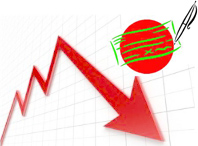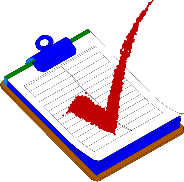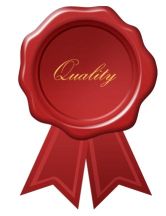By Elizabeth GodsmarkAtlantic Publishing
Part 7 of 7: Reduce Purchase Costs
 The purchasing department is the linchpin when it comes to reducing costs. It is much easier to control costs in this area than anywhere else in the operation. The bottom line is that astute buying techniques offer the best opportunity for a business to increase its overall profits.
The purchasing department is the linchpin when it comes to reducing costs. It is much easier to control costs in this area than anywhere else in the operation. The bottom line is that astute buying techniques offer the best opportunity for a business to increase its overall profits.
- Monitor market trends. An upsurge in popularity of a certain beverage can lead to increased competition amongst vendors. Play them off against each other occasionally. Negotiate. You have nothing to lose!
- Welcome new ideas. Purchasers should always be on the lookout for new ideas and new ways of reducing costs. Don't close your door to sales representatives. They may genuinely have something of interest to your establishment. Consider their promotional discounts.
- "Opportunity buys." Don't rule them out. Take a look at items that may soon be discontinued or overstocked merchandise where a supplier has simply miscalculated demand. You could make big savings.
- Cooperative purchasing. Consider "pool" purchasing with other enterprises. It can give you added purchasing power.
- Change purchase unit size. Buy drinks in larger volumes. This can trim costs considerably, particularly in the case of liquor purchases where sell-by dates tend to be more generous.
- Place multiple orders. Consider buying your full range of drinks from one wholesaler. It may offer you amazing reductions, especially if it's keen to do business with you on a repeat basis.
Topics:
liquor inventory,
inventory managers,
Bar inventory,
liquor purchasing,
managing liquor inventory cost,
bar business,
Bar Management,
Liquor Inventory savings,
inventory control,
managing liquor costs
By Elizabeth GodsmarkAtlantic Publishing
Part 4 of 7: Simplify Purchasing Procedures and Define Duties
Keep Purchasing Procedures Simple
Whatever the size of your operation, certain repetitive purchasing procedures are unavoidable. At the very minimum, a buyer has to complete a purchasing requisition, a purchase order, a shipping instruction, a receiving report and carry out some form of quality control. Purchasing procedures, however, exist for a good reason. Save time, effort and money by simplifying them.
- Change your attitude. Instead of viewing purchasing procedures as an irritation, think of them as a support system. Accurate documentation in this area has rescued many a business from the jaws of liquidation.
- Concentrate on basics. Buyers should always have adequate purchasing procedures in place. The key, however, is to avoid overkill. If a certain procedure in the buying cycle is irrelevant to your establishment, get rid of it. A written requisition, for example, may not be necessary if you regularly "call off stock ordered on a contract basis. Adapt and be flexible.
- The purchasing requisition. Save time. Establish a pared-down requisition procedure that identifies ongoing requirements and automatically triggers the purchasing cycle.
- The purchase order. No skimping here! The purchase order is a legal contract between purchaser and vendor. Even in small organizations, the purchase order needs to be put in writing. Get it right. It can save time, hassle and money in the long run. A computer-generated purchase order considerably reduces human error.
- The shipping instruction. Keep it simple. This piece of documentation is merely a confirmation of instructions from the buyer to the seller. Whether handwritten or computerized, the shipping instruction needs only to contain simple information. It should include the purchase order number for the shipment, and it, too, should be numbered for record-keeping purposes.
- The receiving report. Again, simplify. Although an important document in the purchasing cycle, it only needs to contain basic information: the quantity and condition of the merchandise, whether the merchandise tallies with the original purchase order, a record of stock shortages, the recipient's signature and the date of receipt.
Define Your Purchasing Duties
It is all too easy to get bogged down in the day-to-day activities of purchasing. Remind yourself, occasionally, of your areas of responsibility. It helps you to focus on doing a good job.
- Don't lose sight of your overall goal. Your responsibility, as a purchasing manager, is to maximize value so that your establishment gets the most for its money. No more, no less.
- The cycle of duties. Always bear in mind that a purchaser's areas of responsibility cover an entire cycle of activities: identifying the needs of the establishment, planning, sourcing merchandise, purchasing, receiving, storing and issuing.
- Control. Effective management and control of the purchasing cycle, with a constant eye on costs, is your number-one duty.
- Dealing with vendors. The purchasing department (even if you are a one-man band) is responsible for all external dealings with vendors. The purchaser should be able to handle all vendor-related queries.
- Avoid taking your purchasing problems onto the "shop floor." Front-of-house personnel will not appreciate interruptions while they are trying to please customers. Apart from emergencies, keep all purchasing queries for later.
- High standards. It is the purchaser's duty to make sure that all merchandise purchased is fit for its purpose and of a consistently high quality. High standards = good value.
Topics:
liquor inventory,
inventory managers,
Bar inventory,
liquor purchasing,
Lineup control,
Bar Management,
bar control,
inventory counting,
purchasing,
inventory control
By Elizabeth GodsmarkAtlantic Publishing
Part 2 of 7: Buy Quality

The quality of the merchandise purchased sets the tone and standards for the whole establishment. Don't leave quality to chance. Mistakes can be expensive. Word spreads fast and you want a good reputation!
- Be up-front about quality. Make a conscious decision to purchase "quality" merchandise at the stage when the goals of the business are being established.
- The products you are buying must be suitable for their intended use. Studies have proven that the more suitable a product, the higher its quality. Make sure that the quality of any product measures up to the needs of your establishment.
- Quality must apply throughout the establishment. When it comes to quality, don't concentrate on alcohol beverages alone. Of course the types of wines, spirits, beers and liqueurs you sell are all crucially important; but don't forget the nonalcoholic beverages, such as quality coffee and soft drinks. Consumers in this sector of the market are a discerning and vociferous bunch! Something as simple as a poor cup of coffee can drive a customer away, never to return.
- Don't compromise on quality. Don't be distracted by poor-quality "offers" or bulk buys that you think, on the spur of the moment, might just "do." They won't. You'll end up regretting the purchase.
- Evaluate each product's quality in relation to cost. The most expensive product is not necessarily the best product for your enterprise. When making purchasing decisions, there is no need to sacrifice quality.
- Look at quality from a clientele perspective. What level of quality do your guests expect? Meet their requirements.
- Review your vendors for quality. Do you suffer from wastage due to poor quality products? Assess the quality level of potential vendors by first asking for samples. Document quality specifications to vendors. It is important to avoid misunderstandings.
Topics:
liquor inventory,
inventory managers,
Bar inventory,
bar inventory levels,
liquor purchasing,
bar business,
Bar Management,
Bar products,
inventory control,
managing liquor costs
 The purchasing department is the linchpin when it comes to reducing costs. It is much easier to control costs in this area than anywhere else in the operation. The bottom line is that astute buying techniques offer the best opportunity for a business to increase its overall profits.
The purchasing department is the linchpin when it comes to reducing costs. It is much easier to control costs in this area than anywhere else in the operation. The bottom line is that astute buying techniques offer the best opportunity for a business to increase its overall profits.



